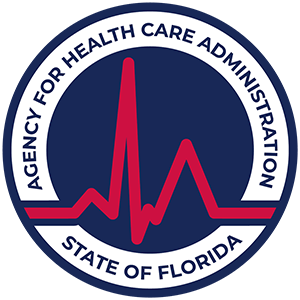Hangover Shakes: Causes, Risks & Prevention Strategies
Tackle hangover shakes head-on with our guide on causes, risks, and effective prevention strategies.
Understanding Hangover Shakes
Alcohol consumption can lead to a wide range of physiological effects, including a symptom known as 'hangover shakes'. In this section, we will define hangover shakes, discuss their symptoms, and explore the causes of these tremors.

Definition and Symptoms
Hangover shakes are tremors that some people experience after they stop drinking alcohol. These shakes affect fine motor tasks such as eating, typing, or dressing. Typically, these tremors are most common in the hands and fingers, but they can also impact other body parts like the head, voice box, and legs.
The severity of hangover shakes can vary from person to person, largely dependent on factors such as the amount of alcohol consumed, the individual's physical health, and their tolerance to alcohol. However, regardless of their intensity, hangover shakes can be a distressing symptom that can disrupt daily activities and cause significant discomfort.
Causes of Hangover Shakes
The primary cause of hangover shakes is the withdrawal of alcohol from the body. Alcohol acts as a nervous system depressant. When a person stops drinking, the nervous system can become overexcited, leading to withdrawal symptoms such as hangover shakes [1].
The consumption of alcohol can lead to changes in the nervous system's functioning, leading to an increased sensitivity to excitatory neurotransmitters. When alcohol is removed from the system, this heightened sensitivity can result in overactivity in the nervous system, manifesting as tremors or shakes.
Furthermore, alcohol can also impact the body's ability to regulate blood sugar levels, which can contribute to symptoms of alcohol withdrawal, including hangover shakes.
Understanding the causes and symptoms of hangover shakes can be the first step in managing these symptoms effectively. In the following sections, we will discuss the impact of alcohol on the body, different types of hangover shakes, and strategies for managing and preventing these symptoms.
Impact of Alcohol on the Body
In order to fully comprehend the causes of hangover shakes, it's crucial to understand the impact of alcohol on the body, particularly its effects on the nervous system and blood sugar levels.
Alcohol's Effects on Nervous System
Alcohol acts as a nervous system depressant, altering the functioning of this system. When a person consumes alcohol, it causes temporary changes to neurotransmitter activity, slowing down the brain's processes and inducing a sense of relaxation or drowsiness. However, when the individual stops drinking, the nervous system becomes overexcited. This can lead to alcohol withdrawal symptoms such as hangover shakes.
Additionally, the rapid drop in alcohol levels in the body can lead to overexcitement in the nervous system, resulting in withdrawal symptoms like tremors and shakes, commonly referred to as hangover shakes [2].
It's worth noting that severe shaking or prolonged tremors can be a warning sign of more severe alcohol withdrawal symptoms like delirium tremens (DT), which can be life-threatening if left untreated. In such cases, seeking medical advice is highly recommended [2].
Low Blood Sugar as a Factor
Alcohol consumption can also lead to low blood sugar levels, which play a significant role in the onset of hangover shakes. Alcohol inhibits glucose production in the liver and leads to a rapid drop in blood sugar levels. This drop can cause symptoms such as shakiness, weakness, fatigue, and confusion, which are often experienced during a hangover.
Moreover, frequent heavy drinking can lead to alcohol-related brain damage, which can also cause tremors during a hangover, further exacerbating hangover shakes.
Hangovers occur due to a combination of factors such as dehydration, poor sleep quality from alcohol metabolism, blood sugar imbalances, and inflammation. These factors collectively contribute to the symptoms of a hangover, including shakes.
Understanding the impact of alcohol on the body and the factors that contribute to hangover shakes can help individuals manage these symptoms effectively and take steps towards healthier drinking habits.
Types of Hangover Shakes
Hangover shakes are a common symptom experienced after excessive alcohol consumption. These shakes vary in location and duration, but they're typically characterized by tremors that can affect an individual's fine motor tasks.
Tremor Locations
Hangover shakes can manifest in various parts of the body. They are most commonly observed in the hands and fingers but can also occur in other body parts such as arms, eyes, head, and voice. Some individuals may also experience tremors in their legs or voice box, adding to the complexity of these shakes.
Below is a summary of the potential locations for hangover shakes:
These tremors can disrupt fine motor tasks such as eating, typing, or dressing, making even the simplest tasks challenging.
Duration and Severity
The duration and severity of hangover shakes largely depend on the amount of alcohol consumed and individual body composition. In some cases, these shakes can last up to a day or two after the individual has stopped drinking alcohol.
The severity of the shakes can also vary significantly from person to person. Some individuals might experience mild tremors that are barely noticeable, while others might experience severe shakes that significantly impact their ability to perform everyday tasks.
Understanding the types of hangover shakes can help individuals seek appropriate help and manage these symptoms effectively. It's important to remember that hangover shakes are a sign of alcohol withdrawal and should be taken seriously. If you or someone you know is experiencing these symptoms, it's important to seek medical advice immediately.
Managing Hangover Shakes
Managing hangover shakes involves addressing the underlying issues that contribute to these symptoms, particularly dehydration and electrolyte imbalance. Here, we discuss strategies to increase fluid intake and balance electrolytes to help alleviate hangover shakes.
Hydration and Fluid Intake
One of the primary ways to combat hangover shakes is through hydration. Alcohol consumption can cause dehydration, which in turn can contribute to the severity of shakes. Rehydrating the body is therefore crucial in alleviating symptoms. Hangover symptoms peak when blood alcohol concentration (BAC) hits zero, and they can last up to 24 hours after drinking. Basic hangover remedies include staying hydrated, eating, and resting [4].
Increasing fluid intake can be achieved through drinking more water, but also through consuming hydrating foods and beverages. Smoothies, for instance, can be a good choice as they can include hydrating ingredients like water, coconut water, unsweetened milks, fruits, and vegetables. These ingredients not only increase fluid intake but also replenish electrolytes lost due to alcohol consumption [3].
Electrolyte Balance
In addition to hydration, balancing electrolytes is vital for managing hangover shakes. Electrolytes like sodium and potassium are crucial for various bodily functions, including nerve and muscle function. Consuming fluids with electrolytes like coconut water can help restore hydration levels and improve symptoms.
Including electrolytes in smoothies can aid in rehydration after severe dehydration, which may help improve hangover symptoms. Ingredients like ginger, avocados, mango, pears, kale, spinach, oats, nuts, yogurt, coconut water, and lime juice can be added to smoothies to help reduce hangover symptoms by providing essential nutrients and hydration.
Remember, while these strategies can help manage hangover shakes, they may not completely eliminate symptoms, especially in cases of severe dehydration or electrolyte imbalance. In such instances, it may be necessary to seek medical help. Furthermore, these strategies are not a substitute for responsible drinking or professional assistance if alcohol use disorder is a concern.
Risks and Warning Signs
When dealing with hangover shakes, it's critical to understand the possible risks and warning signs associated with them. Hangover shakes can be a warning sign of more severe alcohol withdrawal symptoms, including delirium tremens (DT), which can be life-threatening if left untreated.
Indications of Alcohol Withdrawal
Hangover shakes can be indicative of alcohol withdrawal syndrome, especially if there is a sudden stop or reduction in alcohol intake [4]. Shaking and tremors, common symptoms of hangover shakes, can also be indicative of alcohol withdrawal syndrome.
In more severe cases, hangover shakes can signal the onset of delirium tremens (DT), a severe form of alcohol withdrawal that can lead to death in 37% of cases if left untreated [1]. Early diagnosis and treatment can significantly reduce the mortality rate associated with DT.
Seeking Medical Assistance
It's crucial to seek medical advice if more severe symptoms or prolonged shaking occur [2]. Symptoms that warrant immediate medical attention include severe tremors, confusion, high fever, hallucinations, and seizures.
If left untreated, alcohol withdrawal can escalate into a medical emergency. Therefore, anyone experiencing hangover shakes, along with other symptoms of alcohol withdrawal, should seek immediate medical attention. The early diagnosis and treatment of alcohol withdrawal can decrease the mortality rate to less than 5% [1].
Remember, professional help is crucial in managing symptoms of alcohol withdrawal, and it's always safer to seek medical advice if in doubt. Regaining control over one's health and navigating the road to recovery can be a challenging journey, but with the right support and resources, it's entirely possible.
Prevention and Remedies
When it comes to managing hangover shakes, prevention is always better than cure. This section outlines some strategies to avoid the occurrence of hangover shakes and remedies to alleviate symptoms if they do occur.
Avoiding Alcohol Consumption
The most effective way to prevent hangover shakes is to abstain from or significantly moderate alcohol use. Hangover shakes are tremors that some people experience after they stop drinking alcohol. These tremors most often occur in the hands and fingers, and can be a sign of alcohol withdrawal [1].
Reducing alcohol consumption, staying well-hydrated, and consuming food with carbohydrates can help reduce the chances of experiencing hangover shakes. If you're struggling with alcohol addiction, consider seeking professional help to safely and effectively manage your addiction.
Hangover Prevention Strategies
If you choose to drink, there are strategies to help minimize the risk of hangovers, including hangover shakes. Hangovers occur due to dehydration, poor sleep quality from alcohol metabolism, blood sugar imbalances, and inflammation. One potential remedy is consuming smoothies, which may help alleviate hangover symptoms by providing hydration and stabilizing blood sugar levels [3].
Smoothies can be an effective way to increase fluid intake and replenish electrolytes lost due to alcohol consumption. Ingredients such as water, coconut water, unsweetened milks, fruits, and vegetables can provide ample hydration. Including electrolytes like sodium and potassium in smoothies can aid in rehydration after severe dehydration, which may help improve hangover symptoms.
Here are some potential ingredients for a hangover relief smoothie:
While these strategies can help manage the symptoms of hangovers, the best way to avoid hangover shakes and other alcohol-related health issues is to limit alcohol consumption or abstain entirely. If you're struggling with alcohol use, it's important to reach out to a healthcare professional for assistance.
References
[1]: https://www.medicalnewstoday.com/articles/hangover-shakes














.svg)








